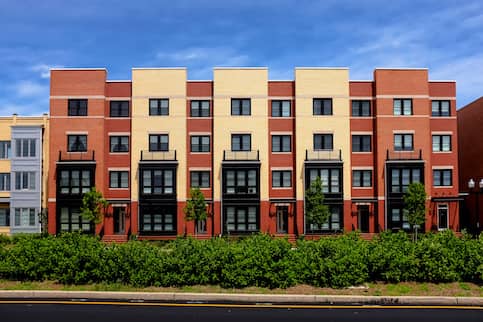Comprehending the Duty of Condo HOA in Community Administration
Comprehending the Duty of Condo HOA in Community Administration
Blog Article
Just How Condominium HOA Regulates Shared Rooms and Boosts Neighborhood Harmony
The governance of shared rooms within a condo association plays a critical role in promoting area communication and preserving property worths. Via the facility of extensive standards, the Apartment HOA not just controls the use of common amenities yet also promotes a society of regard and liability amongst homeowners. By dealing with possible conflicts and assisting in open discussion, the HOA can improve the total living experience. However, the efficiency of these methods frequently depends upon active participation and commitment from all members, increasing questions regarding the very best strategies to achieve lasting area harmony.
Duty of the HOA
The home owners association (HOA) functions as the regulating body for condominium communities, playing a critical duty in maintaining the home and promoting a cohesive living atmosphere. It is accountable for enforcing and enacting neighborhood regulations and policies, which are created to protect the aesthetic value and capability of the common space. This governance makes certain that all locals stick to a standardized set of assumptions, cultivating a feeling of unity amongst varied property owners.
Furthermore, the HOA handles the monetary aspects of the community, consisting of budgeting, collecting dues, and keeping typical areas. This monetary oversight is critical in making certain that required upkeep and improvements are accomplished without delay, enhancing residential property worths in time. The HOA likewise functions as an intermediary between citizens and external entities, such as city government and company, attending to public issues efficiently.
Furthermore, the HOA typically organizes community occasions and programs, motivating neighborly communications and building connections amongst homeowners. By promoting open communication and dealing with grievances, the HOA adds to an unified living atmosphere. Thus, its complex function is vital in guaranteeing the smooth procedure and overall fulfillment within condo communities.
Guidelines for Shared Areas
Effective governance in condominium communities necessitates clear policies for shared areas, which are crucial for preserving order and promoting a sense of community among residents. These policies act as standards that make certain every person can enjoy usual areas, such as pools, gardens, and entertainment facilities, without problem.
Furthermore, tidiness and upkeep criteria are crucial, commonly stating that locals should cleanse up after themselves and report any type of problems to the homeowners' association. By plainly interacting these expectations, the HOA can reduce misconceptions and motivate respect among citizens.
Ultimately, distinct guidelines for shared areas add to the overall top quality of life in a condo area, allowing homeowners to exist side-by-side peacefully while delighting in the amenities that improve their living experience. condo hoa.
Relevance of Community Guidelines
Community standards play a significant function in fostering a natural and respectful environment within condominium associations. These guidelines develop clear expectations for locals, promoting a feeling of accountability and shared obligation. By marking acceptable behaviors and practices, area guidelines assist avoid misunderstandings and conflicts amongst citizens.
Moreover, these guidelines act as a framework for keeping the visual and practical integrity of common spaces. They make sure that all citizens stick to criteria regarding property upkeep, sound degrees, and usage of public centers. This harmony not only boosts the aesthetic charm of the area yet likewise adds to overall residential or commercial property values, profiting all house owners.

Problem Resolution Approaches
Navigating disputes within a condo association calls for an organized approach to guarantee reasonable and reliable resolution. Effective conflict resolution strategies frequently start with open communication, motivating homeowners to voice issues in a respectful way. Developing an assigned channel for grievances, such as a suggestion box or an on-line discussion forum, can facilitate this procedure.
Mediation is another crucial method, in which a neutral third party assists challenging homeowners reach an equally acceptable remedy. This method fosters cooperation and understanding, minimizing hostility - condo hoa. The HOA board need to also establish clear treatments for dealing with complaints, ensuring all events know the actions involved
Routine problem resolution training for board participants can improve their capacity to manage disagreements efficiently. Utilizing a well-defined structure, such as the "Interest-Based Relational Technique," helps concentrate discussions on passions instead than placements, promoting a solutions-oriented frame of mind.
Advantages of Area Harmony
Cultivating area consistency within a condominium organization brings countless benefits that boost the total living experience for residents. An unified community encourages cooperation and teamwork amongst neighbors, bring about an extra kindly environment. When residents feel connected and highly regarded, they are a lot more likely to participate in common tasks and join decision-making procedures, resulting in a stronger feeling of belonging.
In addition, neighborhood consistency substantially reduces misconceptions and disputes, which can or else interfere with every day life. A calm atmosphere decreases anxiety and promotes psychological well-being, allowing locals to appreciate their homes totally. Furthermore, unified relationships usually convert right into enhanced residential property values, as possible buyers are attracted to neighborhoods defined by stability and participation.

Conclusion
With the establishment of clear regulations and neighborhood standards, residents are motivated to maintain a considerate and responsible environment. Inevitably, the initiatives of the HOA add to a cohesive neighborhood, advertising both home values and general resident fulfillment.
Moreover, the HOA often organizes read neighborhood events and programs, motivating neighborly communications and developing connections amongst citizens. By delineating acceptable behaviors and practices, area standards assist stop misunderstandings and conflicts among residents.
Additionally, area standards promote effective communication amongst residents read this and the Homeowners Association (HOA) Through the establishment of clear regulations and community guidelines, locals are encouraged to maintain a accountable and respectful atmosphere. Eventually, the efforts of the HOA contribute to a natural area, advertising both home values and total resident satisfaction.
Report this page